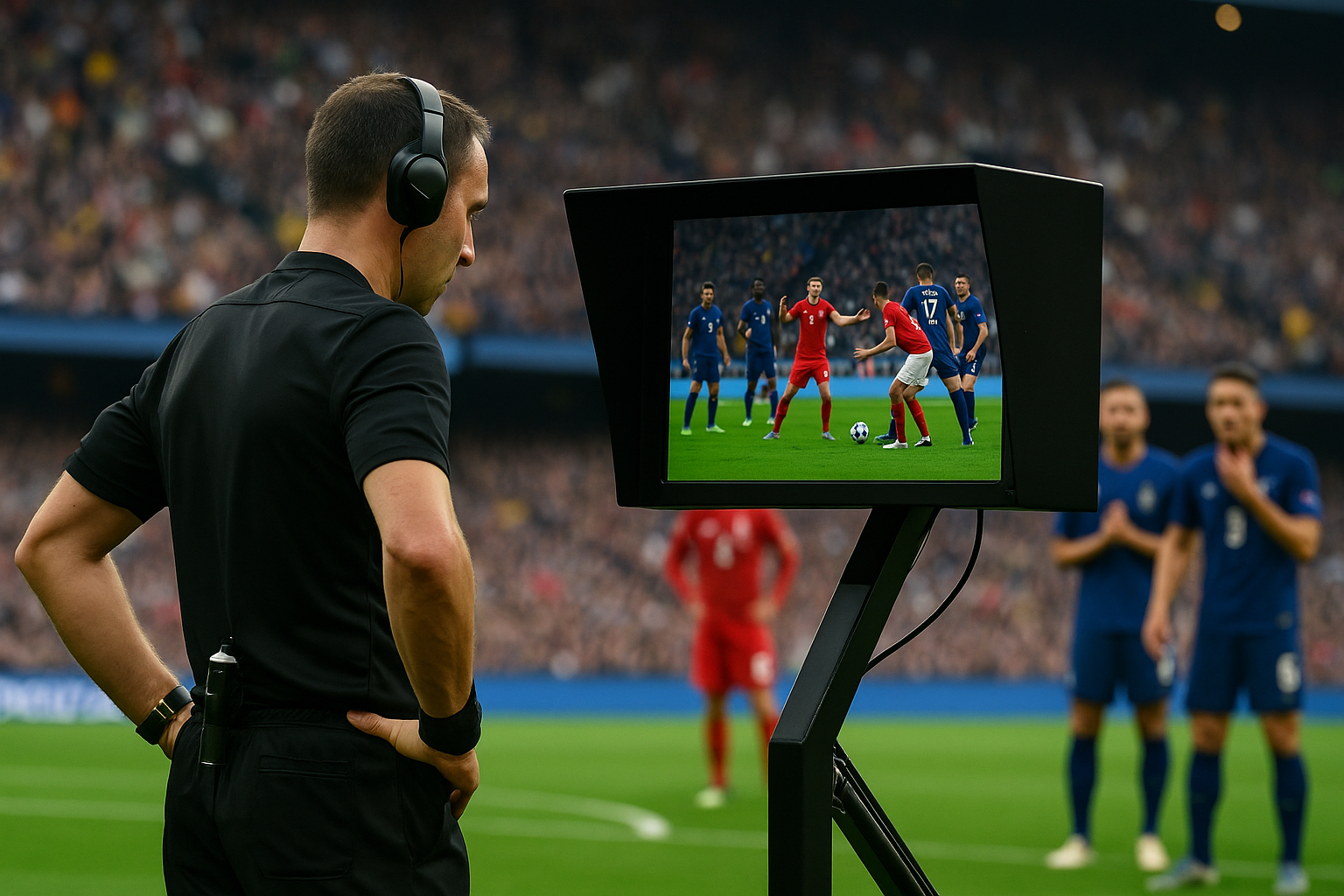Sports have always been an area where human decisions could lead to controversy, misjudgments, and emotional debates. Referees, judges, and officials are human, and even the most trained professionals can make errors under pressure. These errors, intentional or not, have long shaped the outcomes of critical matches and even entire careers. But today, with the rapid advancement of digital tools and data processing capabilities, technology is stepping in to correct many of these issues in real-time. Tools like Video Assistant Referee (VAR), automatic offside detection, and AI-powered anti-doping systems are transforming the sporting world. They make competitions fairer, more transparent, and more trustworthy. (At the same time, some online entertainment platforms have adopted similarly advanced systems to ensure a seamless user experience, like Crazy Time registration.)
VAR: A Game-Changer in Refereeing

Since its debut in elite competitions like the FIFA World Cup and UEFA Champions League, VAR has revolutionized the way critical decisions are made in football. It enables referees to revisit key moments—goals, penalties, red cards, and mistaken identity situations—using high-resolution video footage from multiple angles. This drastically reduces the likelihood of clear and obvious errors.
Before VAR, a single mistake could change the course of a game, leaving fans and players frustrated. Now, referees have a safety net. They are supported by a team of video officials who help them make better-informed decisions.
Criticism remains. Some argue that it interrupts the flow of the game or that it’s still prone to subjective interpretation. But data speaks for itself—studies have shown that VAR significantly improves the accuracy of decisions. The sense of fairness it brings to the game is hard to ignore.
- Corrects obvious refereeing errors in high-stakes moments
- Improves decision consistency across matches
- Boosts transparency and public trust in outcomes
With VAR, outcomes rely more on skill and less on luck or officiating flaws. This marks a fundamental shift in how football is played and perceived.
Semi-Automated Offside Detection
Offside calls are among the most controversial and technically difficult decisions in football. Traditionally, they relied entirely on the eyesight and reaction time of the assistant referees. But with the advent of semi-automated offside detection, this has changed dramatically.
This system, first used on a large scale during the FIFA World Cup 2022, integrates multiple cameras tracking 29 data points on each player, combined with real-time analysis through artificial intelligence. It creates a precise 3D model of the field and players to determine an offside position with millimeter accuracy.
Benefits of this system include:
- Faster decision-making, often under a second
- More accurate offside detection with visual confirmation
- Increased fairness and reduced post-match controversy
The addition of a visual rendering for fans watching at home or in stadiums has also enhanced transparency. People can see why a goal was disallowed or allowed, rather than being left in the dark.
This technology brings a level of objectivity and precision that human eyes simply can’t achieve, especially in high-speed situations. It’s a major win for both players and fans.
Artificial Intelligence and Anti-Doping

Doping control is a major challenge in professional sports. Traditional tests look for banned substances, but athletes have found ways to avoid detection. This is where artificial intelligence makes a difference.
AI systems like the Athlete Biological Passport (ABP) monitor changes in athletes’ biological data over time. They don’t just look for drugs—they flag unusual patterns.
AI helps by:
- Spotting suspicious changes in test results
- Predicting who may be at risk of doping
- Comparing performance trends with biological data
This targeted approach means fewer unnecessary tests and better accuracy. It helps protect clean athletes and catch those who cheat, keeping competition fair.
Ethics and Limits of Technology
Despite all the advantages, technology must remain a tool—not a replacement—for human judgment. Officials, doctors, and sports authorities should always retain final control. Misused or misunderstood tech can do more harm than good.
Ethical considerations include:
- Ensuring the privacy of athletes and sensitive personal data
- Offering equal access to technologies across all leagues and nations
- Training officials to interpret and manage these tools effectively
There’s also a danger of overreliance. No technology is perfect, and algorithms can inherit biases based on how they’re designed. In some cases, too much dependence on machines may lead to a lack of accountability.
Conclusion
Modern technologies are reshaping how sports are played and judged. From faster offside calls to more accurate doping checks, the improvements are real. Used well, these tools help reduce unfairness and make results more credible.
Yet, sport is also about emotion and human spirit. It’s important to balance tech with human judgment. Machines should help—not replace—our decisions. This is how we protect both fairness and the soul of sport.





















